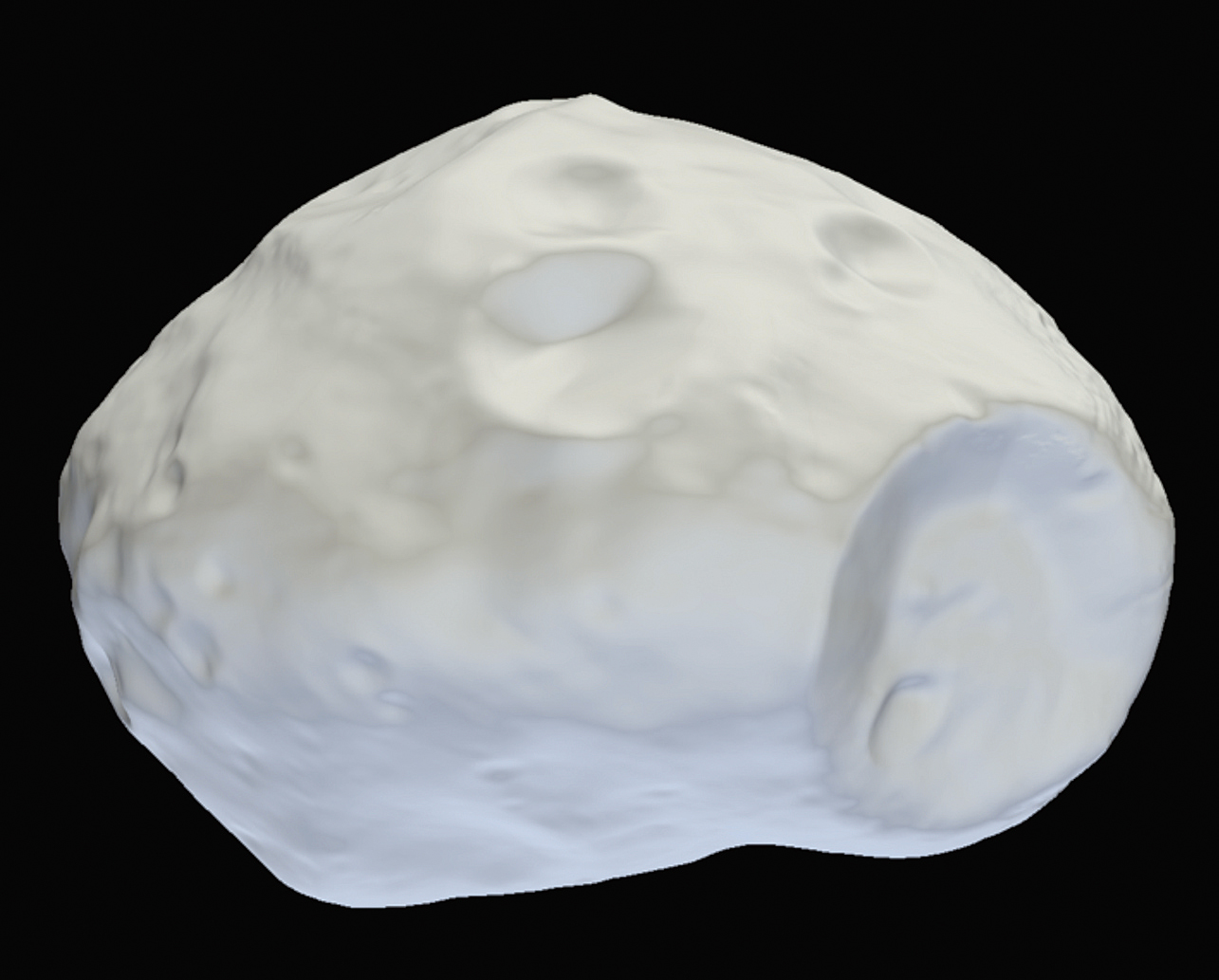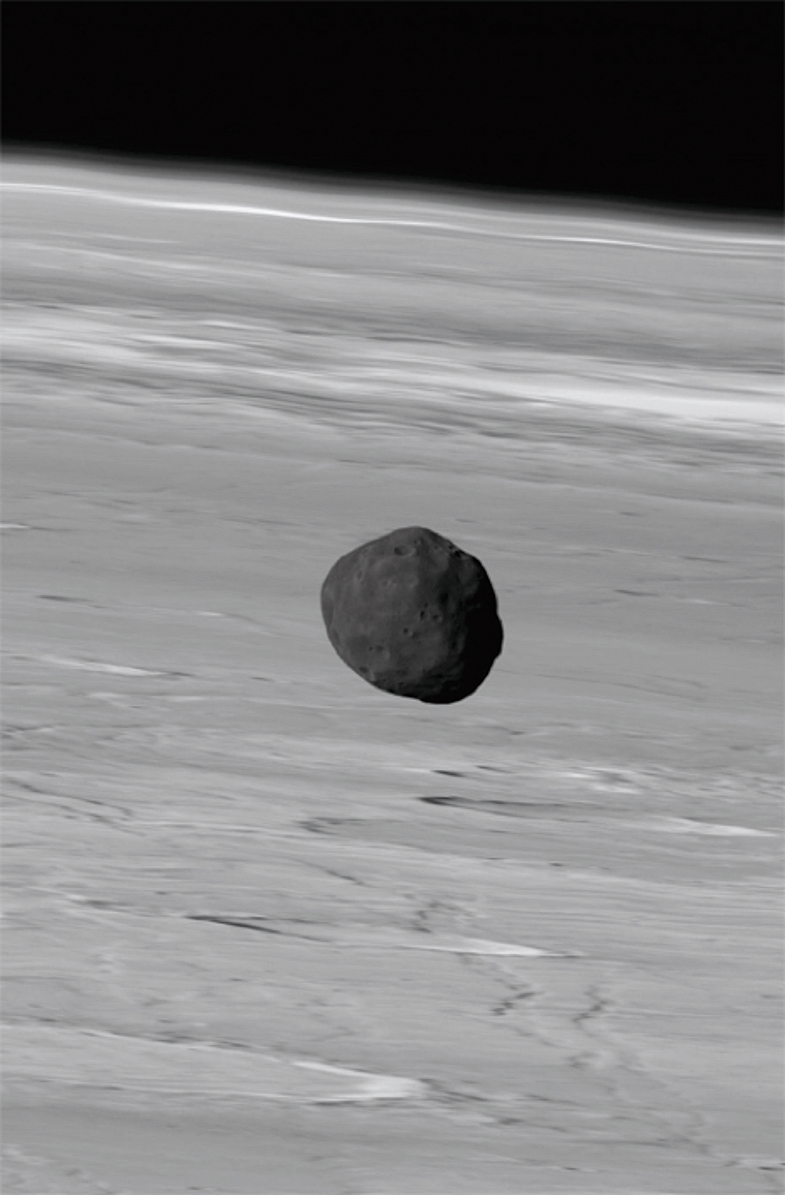B2
1/140,000-scale Phobos model
Phobos is one of the two satellites of Mars. Phobos orbits about 6,000 km from the surface of Mars, which is anomalously close to its primary compared to any other moon in the solar system. The dimensions of Phobos are about 27.0×21.4×19.2 km, similar to those of asteroid Eros. The displayed item is a 1/140,000-scale, 3-D model of Phobos, generated using an optimal numerical shape model derived from numerous images obtained by previous missions. The origin of Phobos is still poorly understood. The reflectance spectra of Phobos show patterns similar to D-type asteroids, which are believed to be one of the most primitive bodies in the solar system, and thus this satellite might be a captured asteroid from the main belt. However, the orbit of Phobos does not support this possibility because its eccentricity and inclination to Mars are only 0.0015 and 1°, respectively, which is more consistent with an in-situ formation hypothesis (i.e., coalesced material from Mars due to a large impact event similar to that hypothesized for the Earth-Moon system). Understanding both the origin and evolution of Phobos should provide important insight into fundamental questions regarding the formation of terrestrial planets and the evolution of asteroidal bodies. Even though Phobos has been studied using data acquired by several spacecraft, the primary mission objectives have concerned Mars, and thus critical observations, such as high-resolution global imaging and gravity measurements, have not performed. For this reason, planetary scientists of the University of Tokyo in concert with others have proposed the Phobos sample-return mission, which is now called the Mars Moon exploration (MMX) mission scheduled to be launched in the early 2020s. (Hideaki Miyamoto)


